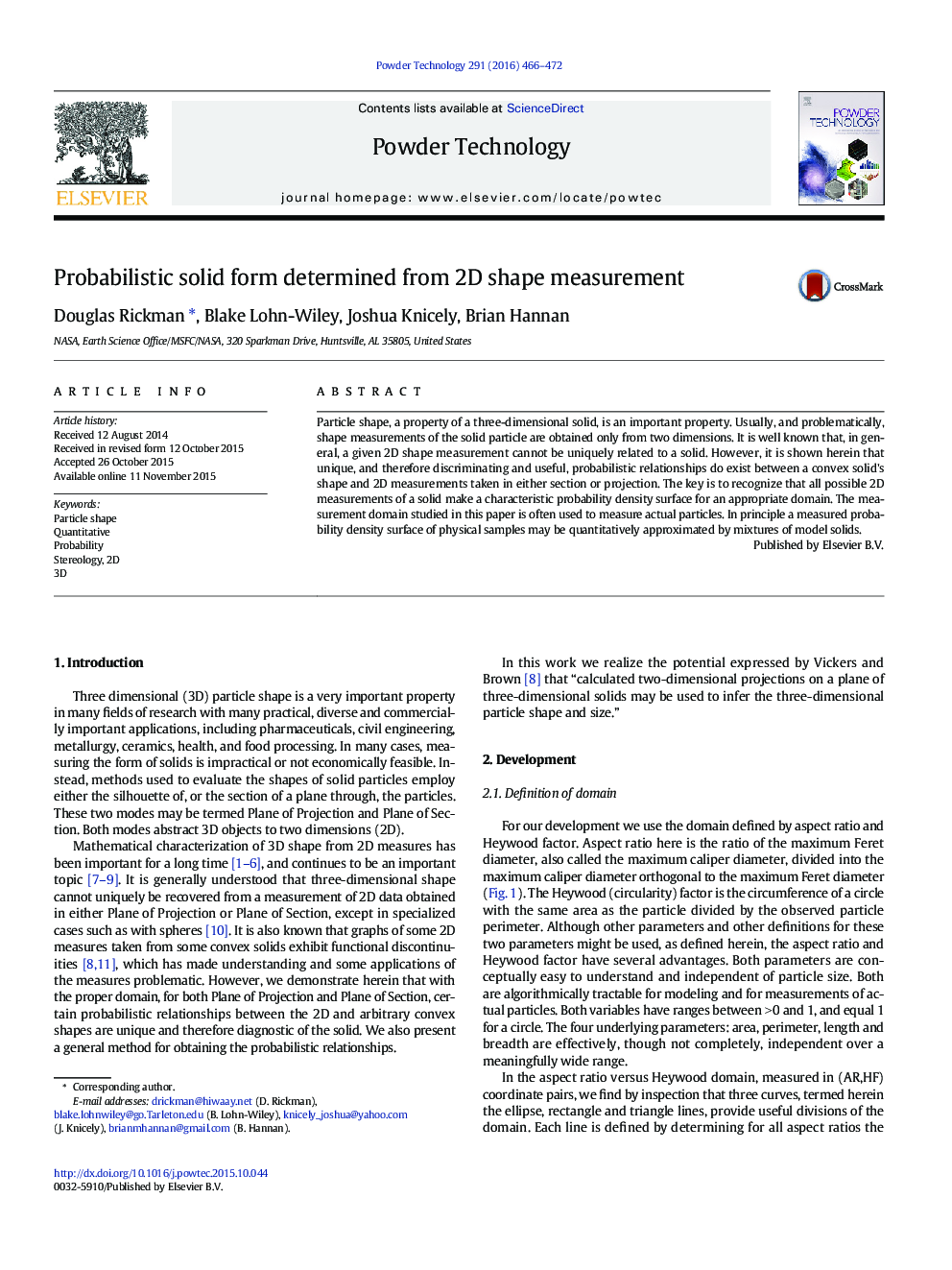| Article ID | Journal | Published Year | Pages | File Type |
|---|---|---|---|---|
| 235033 | Powder Technology | 2016 | 7 Pages |
•Transformation of convex, symmetric solids into AR/HF space was studied.•For each solid all possible silhouettes form a characteristic probability surface.•Also, all possible 2D planar sections form a characteristic probability surface.•Contrary to accepted stereology, forms of 3D particles can be deduced from 2D data.
Particle shape, a property of a three-dimensional solid, is an important property. Usually, and problematically, shape measurements of the solid particle are obtained only from two dimensions. It is well known that, in general, a given 2D shape measurement cannot be uniquely related to a solid. However, it is shown herein that unique, and therefore discriminating and useful, probabilistic relationships do exist between a convex solid's shape and 2D measurements taken in either section or projection. The key is to recognize that all possible 2D measurements of a solid make a characteristic probability density surface for an appropriate domain. The measurement domain studied in this paper is often used to measure actual particles. In principle a measured probability density surface of physical samples may be quantitatively approximated by mixtures of model solids.
Graphical abstractFigure optionsDownload full-size imageDownload as PowerPoint slide
